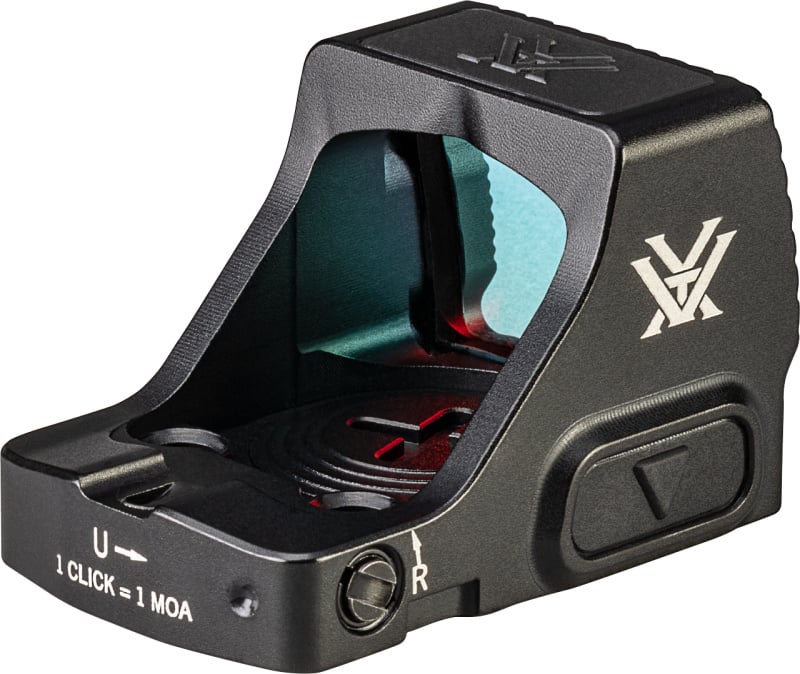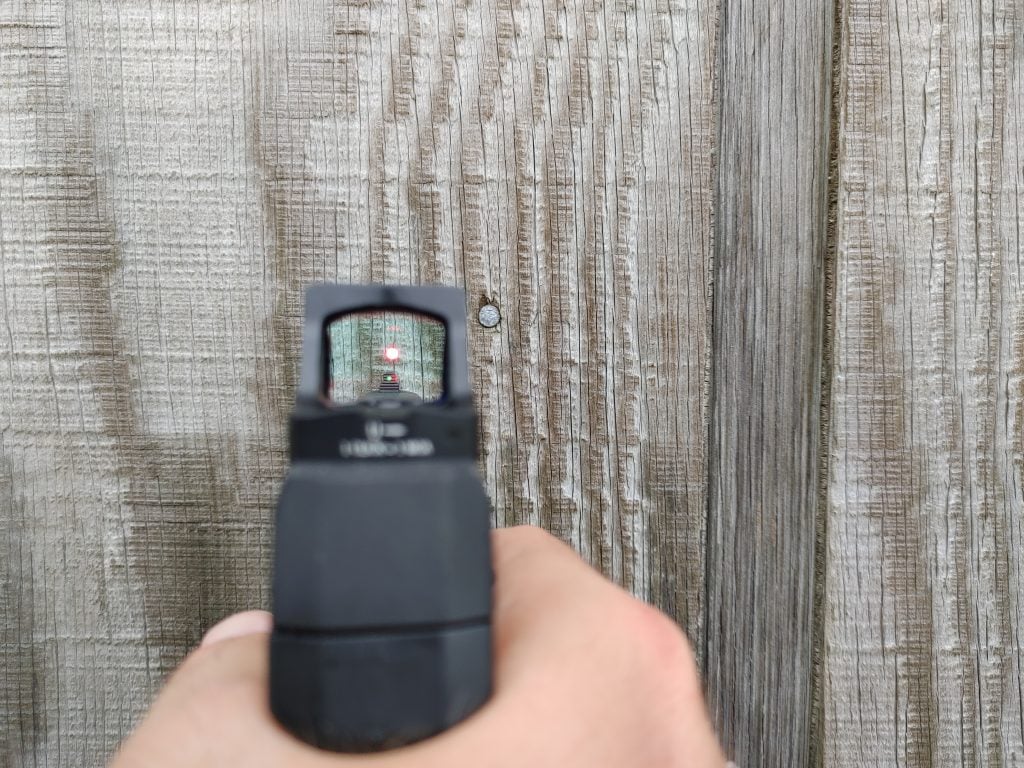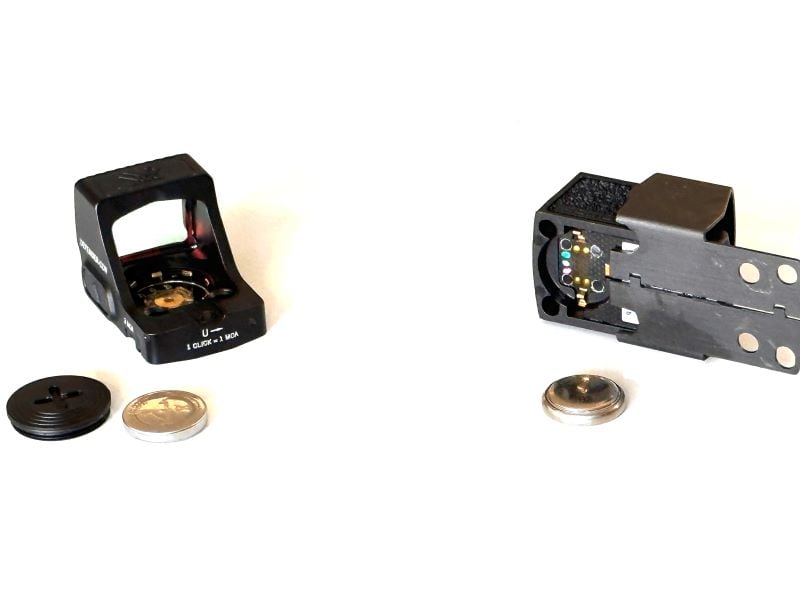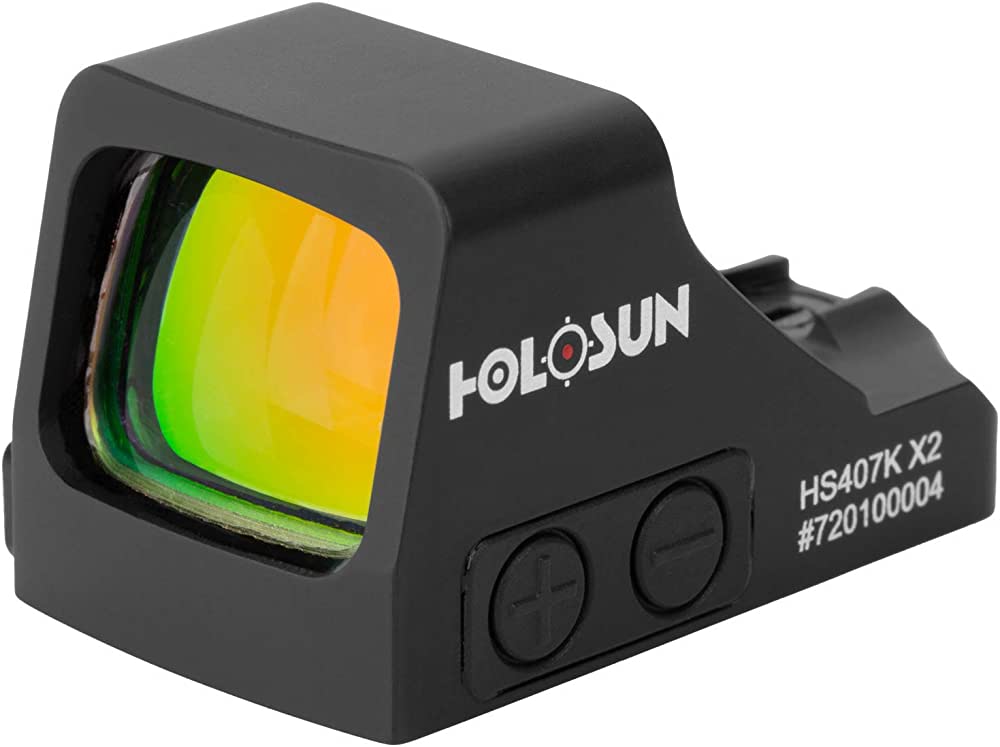It’s never been better to carry a subcompact or micro-compact pistol. The accessory market has been expansive and allowed a micro compact or subcompact to have a ton of modern accessories. This includes lights and optics. The world of micro-optics has expanded rapidly, and there have been several models released recently in the budget category. Today we are going to look at two micro compact red dots, the Holosun 407K and Vortex Defender, and see which budget model works best.
What They Have in Common
These optics are very similar in many ways. In fact, they are more similar than they are different. They are both micro-compact optics that use the industry standard Shield RMSc footprint. These little optics utilize open emitters with red dots, and heck, both use a notch in the rear that offers a rear sight to the shooter. Holosun and Vortex both import the optics, and they are both very budget friendly at around $250-ish each.
Let’s look at both a little more in-depth and the various models available for you.
The Holosun 407K Models
Holosun offers four different models of the 407K, which vary in reticle size and color. The 407K comes in either red or green reticle models, and the reticles come in either 2 or 6 MOA variants. The 407K series is currently for sale, as cheap as $225.

Vortex Defender
The Defender CCW is the newest of the two dots and just came out earlier this year. The Defender series has two models, and they only currently vary by reticle size. You can purchase a 3 MOA or 6 MOA model. This is subject to change as the lineup matures. The retail price of the Defender is $250.

Reticles and Brightness Settings
Reticle size is a preference for individual shooters, but there is some objective information we can gain regarding the two optics. Both are budget red dots, and you won’t get a reticle that’s as clear and crisp as something like the much more expensive Steiner MPS. Both are certainly clear enough to shoot with, and both are a bit star bursty.

The Defender seems to have a lower refresh rate than the Holosun 407K. When you move rapidly between targets, you’ll notice the lag. The Defender gets a lot better when you up the brightness to max, but the 407K performs better overall with a better refresh rate overall.
With the Holosun 407K, we get 12 brightness settings. Two are night vision settings, and 10 are daylight bright. The Vortex Defender CCW offers 20 settings, with two for night vision and eight for daylight. Both are daylight bright, even in the brightest environments against bright targets, they work perfectly. No big differences here.
Ergonomics
Let’s Look at the dimensions of the two optics.
- Length: 407K – 1.6 Inches; Defender – 1.6 Inches
- Width: 407K .98 Inches; Defender – 1 Inch
- Height: 407K .95 Inches; Defender – 1 Inch
- Window Size: 407k – .58 X .77; Defender – .65 x .8
- Weight: 407K – .95 ounces; Defender 1 Ounce
In terms of size, both red dots are impressively small. The Defender is slightly bigger, but not enough to really matter. The window size favors the Defender, but the 407K is lighter.
Both optics use a dual-button configuration. The Vortex Defender CCW uses large buttons, one on each side. The Holosun 407K uses two small buttons on either side of the optic. While both work fine, I do prefer the buttons on the Defender. They are larger and easier to press. At the same time, they are recessed and won’t be accidentally pressed.
Battery Life
Both red dots use a 1632 battery. The Vortex Defender has a battery life of 9500 hours, and the Holosun 407K has a projected battery life of 50K hours. Is it common for companies to exaggerate their battery life? Yes, but there is a very clear winner in this category.

Both optics have a shake-awake feature. Sadly, only one of them makes sense. The Holosun 407K automatically shuts off when it fails to detect movement for 10 minutes it auto shuts off. With the Defender, it only shuts off after not recognizing movement for 14 hours!
Both the Vortex and Holosun use smart battery placement as well. Holosun uses a side-loading design that’s clever and easy to swap. Vortex Defender uses a top-loading design that’s also easy to swap. I don’t have a preference for one or the other. As long as it’s not bottom loading, I’m happy.
Durability
Both the 407K and Defender are worthy CCW optics. I’ve dropped them, shot the hell out of them, and used both to rack the slide of my gun with no issues. Heck, I clean them with a water hose, so they can take a beating.
The Holosun 407K is rated IP67 for ingress protection. This means it can be submerged up to a meter for half an hour. The rating also guarantees it’s protected against dust entrance.
The Vortex Defender is IPX7 rated, meaning it can also be submerged for half an hour in one meter, but it does have a dust ingress protection rating. As long as you don’t open carry in a sand storm regularly, this isn’t likely to be an issue.
Both are shockproof, and the Gs created by a reciprocating handgun slide can be quite fierce, so there aren’t any concerns there. Both are well suited for concealed carry and the bumps and bruises a CCW gun might receive.
Leftovers
Before we wrap up, let’s mention a few extra features that don’t have their own category. The Holosun 407K offers a lockout mode to lock the buttons. The Vortex Defender comes with a front texture to aid in racking off items. Holosun provides a small tool and screws with their optic. Vortex provides a handy tool and an absolute ton of screws, so it fits everything.

Holosun provides tactile and audible clicks while zeroing. The Vortex has very faint feedback for its turrets. The Holosun tends to have a darker blue tint than the Vortex, but only ever so slightly. Vortex offers one of the best warranties in the optics market, and it deserves some credit.
These two optics have a ton in common but more than a few differences in their design. I have my preferences, but I’m more interested in yours. Which would you pick, and why?

